BY ELIZABETH DUNLOP RICHTER
At long last, a river cruise! My husband and I had considered one for many years but always ended up planning our own trips. Friends and relatives finally convinced us that we didn’t have to organize every expedition ourselves.
We were intrigued by an opportunity explore the Danube, Europe’s second longest river and, for centuries, one of its primary transportation arteries, immortalized in Johann Strauss, Jr.’s song “By the Beautiful Blue Danube.” We wanted to experience the rich cultural heritage of the region and see how Hungary and the Czech Republic had emerged from behind the Iron Curtain.
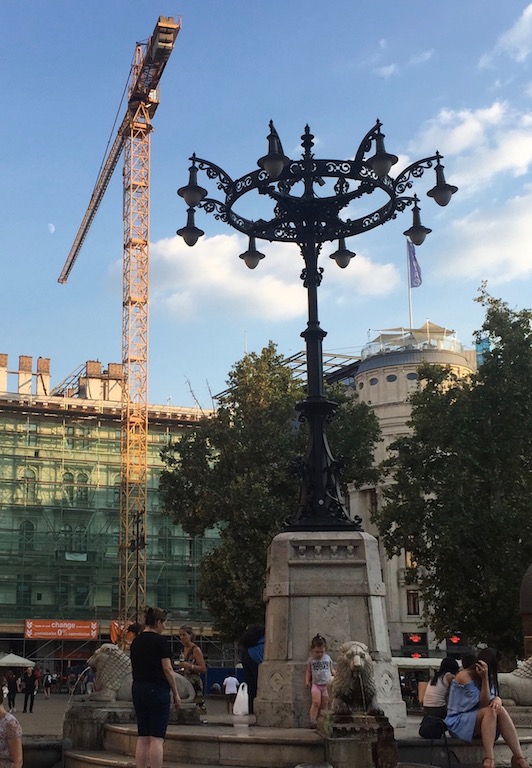
Old and new in Budapest.
The Danube Waltz was Viking’s enticing name for its four-country central European cruise from Budapest, Hungary, to Bratislava, Slovakia, and on to Vienna, Austria, and Passau, Germany. We booked it and planned additional time in Prague and Meissen, Germany, where my husband’s ancestors had lived.
The email arrived three days before we left: Viking explained that this summer’s drought in Europe had significantly lowered the water level in the Danube. We learned that our first night in Budapest would not be spent on a Viking longship, but in a Budapest hotel. We’d miss a stop at Bratislava and be bussed to Vienna to meet our ship. Oh dear, this was not the most encouraging introduction to what we hoped would be a fascinating water journey on the “heart and soul” of Central Europe.
Clearly, Viking would have to implement a Plan B to house 190 passengers in Budapest and get us to Vienna. The logistics seemed daunting, but Viking was prepared. We were whisked the afternoon we arrived from the airport to the 5-star Kempinski Hotel, a striking modern hotel in a city ranked by the Brookings Institution as the second fasting growing urban economy in Europe (2015).
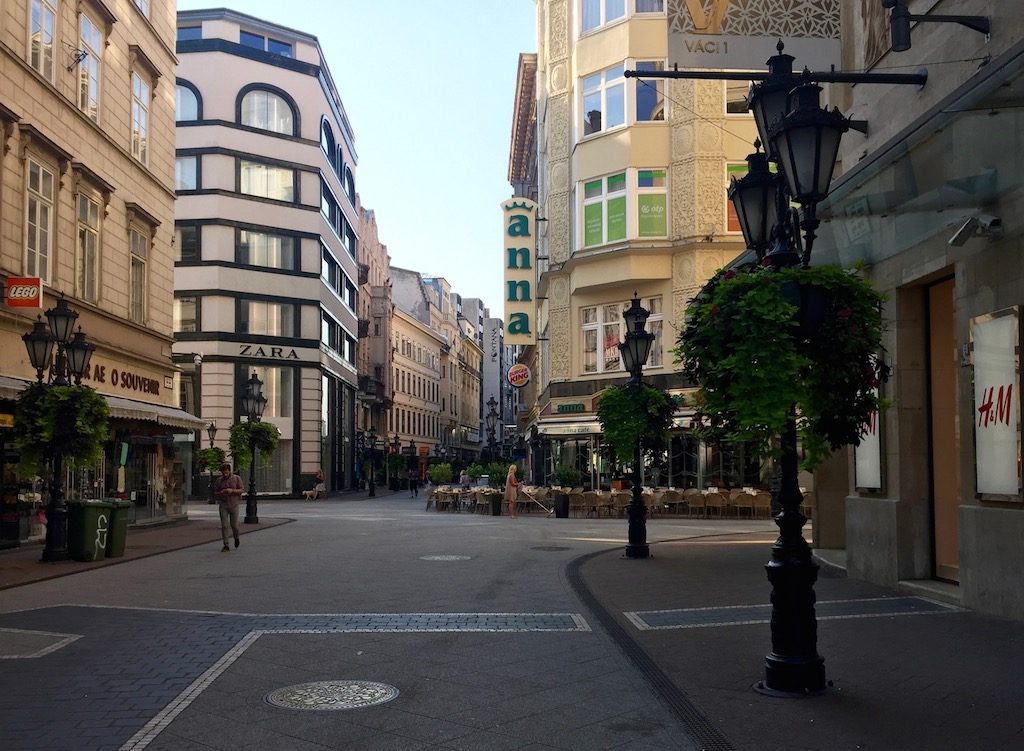
Budapest shopping, early morning.
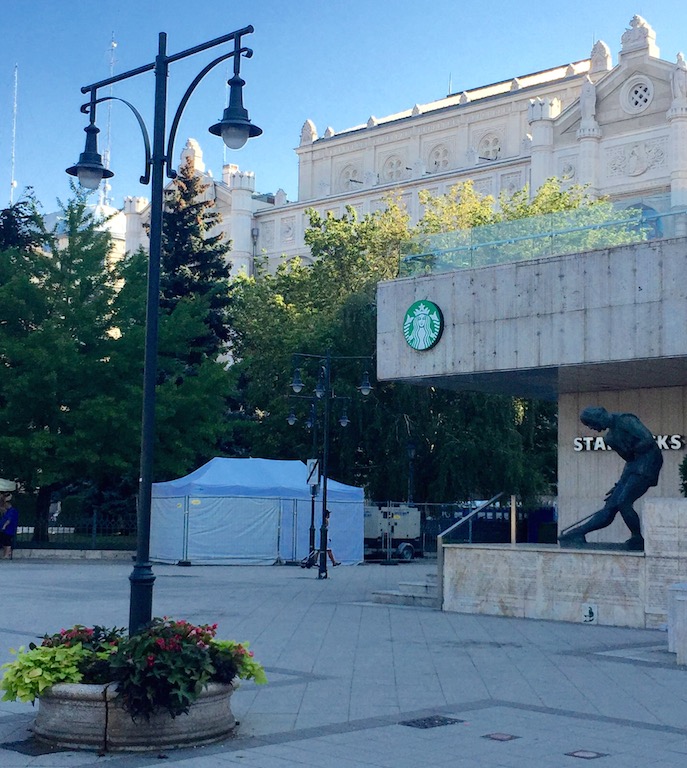
Ubiquitous Starbucks, Budapest.
My early morning walk the next day confirmed a city on the rise: I found familiar international brands like H&M, Zara, and multiple Starbucks tucked among a stunning variety of Renaissance, Baroque, Art Nouveau, and Neo-Classic buildings. Budapest is a lovely big and bustling city where construction cranes tower over classic stone fountains. Hungarian crafts and unique pastry shops dot the blocks near the waterfront.
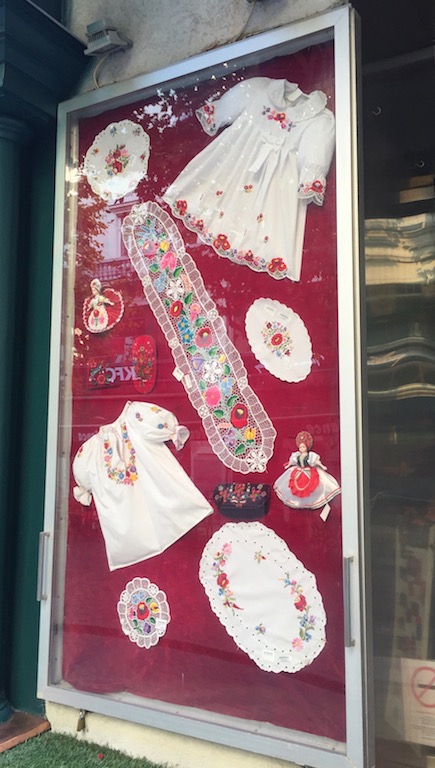
Budapest embroidery.
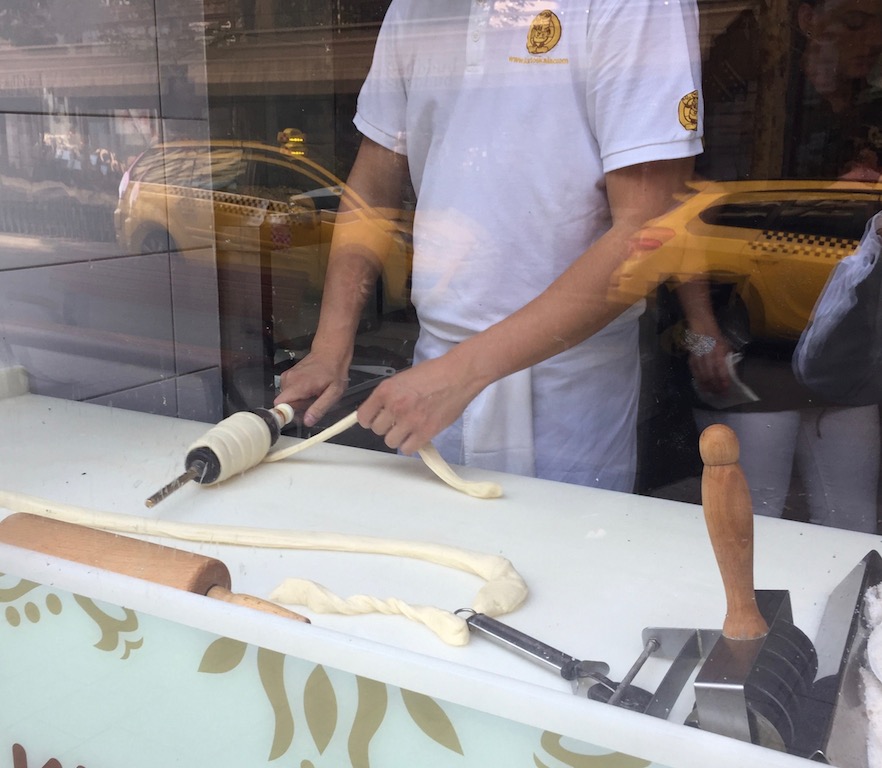
Traditional baking.
The Plan B schedule and St. Stephen’s Day, a national holiday, prevented us from visiting the historic Castle Hill, but we did get to the former 19th-century Hapsburg fortress known as the Citadel. On a cloudless morning, we were delighted by dramatic views of the city, originally divided by the Danube into Buda and Pest.
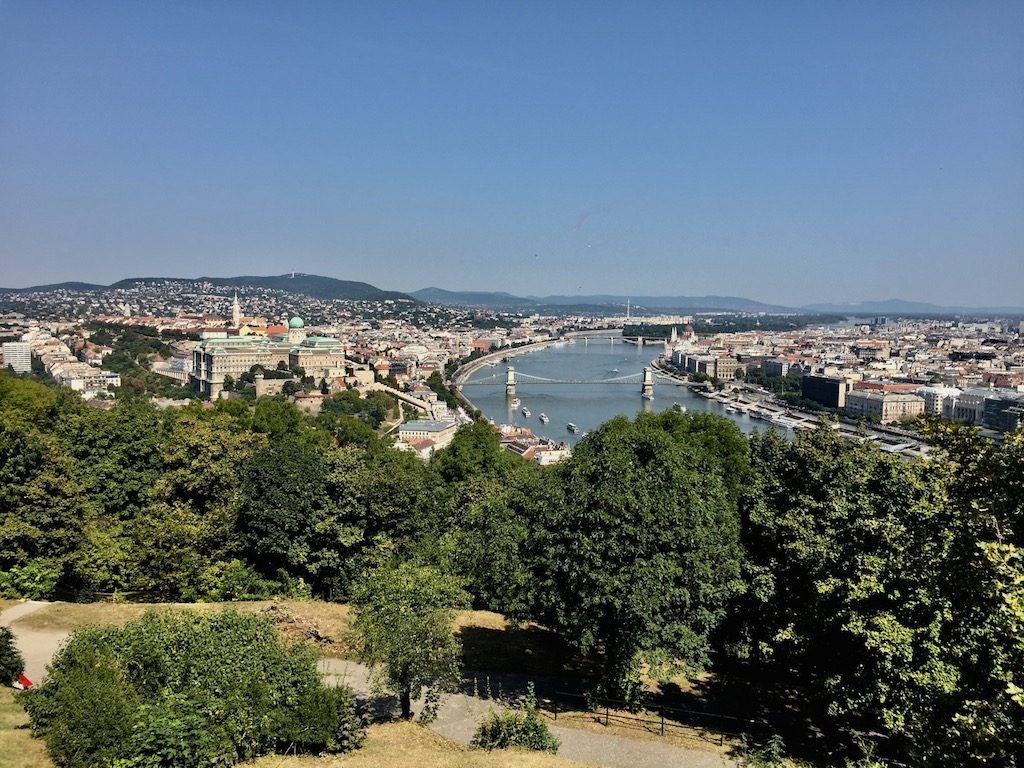
Budapest view from the Citadel.
Perched on top of the Citadel was their own Statue of Liberty, erected by the occupying Soviets to celebrate the Russian liberation of Hungary from Nazi oppression. The Citadel ironically was later the staging ground for the Soviets’ brutal quashing of the 1956 Hungarian revolution. Today the Statue of Liberty has been repurposed with a new inscription reflecting the 1989 fall of the Iron Curtain: “To the memory of those all who sacrificed their lives for the independence, freedom, and prosperity of Hungary.”
On that afternoon’s coach trip to Vienna, our Hungarian guide continued her morning briefing on the history of the region. Hundreds of years of college European history slowly began to come back: the Roman Empire, the Kingdom of Hungary, the Ottoman Empire, the Holy Roman Empire, the Hapsburg Dynasty, the Austro-Hungarian Empire with their ever-changing borders, once again altered by the world wars of the 20th century. We anticipated rich layers of art, music, architecture, and, all too often, delicious pastries.
Missing Bratislava was tough, but we gained an extra day in Vienna, the glorious imperial capital of the Austrian Empire. After Viking’s panoramic tour of Vienna and our walk through the plazas of the Hofburg, the Hapsburg’s Imperial Palace, we explored Vienna on our own.
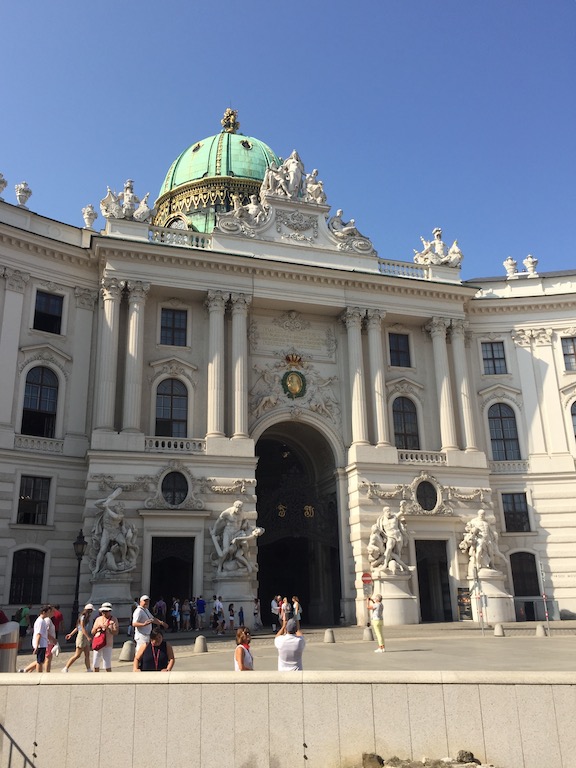
Hofburg palace.
We honed in on two of Austria’s best-known artists, Gustav Klimt and his protégé, Egon Schiele. We found numerous examples of both at the Leopold Museum, dedicated to Vienna’s iconic contributions to the early-20th century’s Art Nouveau movement.
A wonderful surprise was the Leopold’s exhibit “WOW! The Heidi Horten Collection,” one of Europe’s most impressive private collections of 20th-century art, assembled by the widow of supermarket mogul Helmut Horten. From Matisse and Picasso to Gerhard Richter and Damien Hirst, we were delighted to see masterpieces seldom if ever before exhibited in public.
Looking for additional Klimt and Schiele work, we found them plus more Viennese history at the stunning Baroque Belvedere Palace Museum, built in 1712 for the Hapsburg Prince Eugene of Savoy.

Vienna Belvedere.
Like art and architecture, the giants of classical music can’t be separated from Vienna. Our day ended with a private concert featuring the music of Viennese residents Wolfgang Amadeus Mozart and Johann Strauss, Jr. in an intimate concert hall performed by the excellent Vienna Residence Orchestra, singers, and dancers.
Now comfortably settled on the Viking Legend longship, we saw the benefits of river cruising: efficient but attractive state rooms, daily briefings on the next day’s itinerary, live music in the lounge every evening, and skilled chefs whose custom egg white omelets enabled later culinary indulgence.
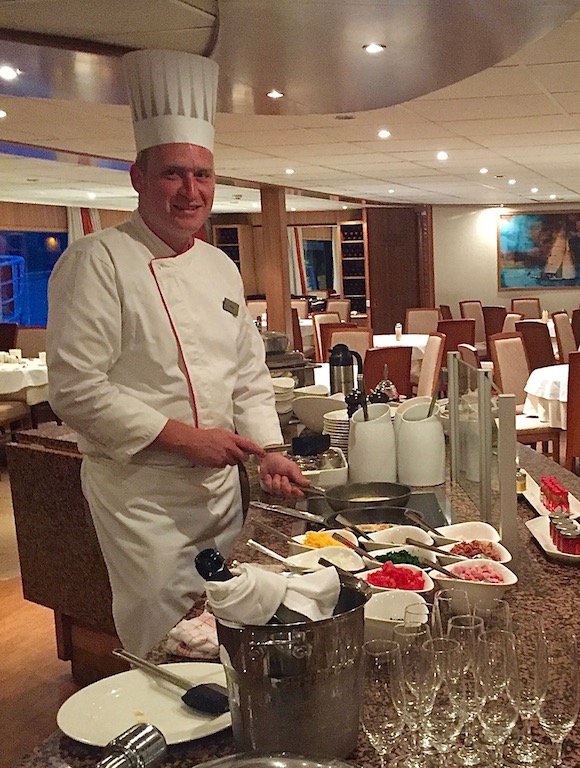
The omelet station.
From Vienna we travelled overnight to Krems, the oldest town in lower Austria, dating in the written record back to 995 CE. Archeological evidence shows Stone Age and Roman settlements here, too, and elsewhere along the Danube.
We explored the nearby Gottweig Abbey, founded in the 11th century by the Benedictine order on top of Gottweig Mountain. It is today home to 40 monks who serve Catholic parishes in the region and tend the abbey’s extensive mountainside vineyards and apricot orchards.
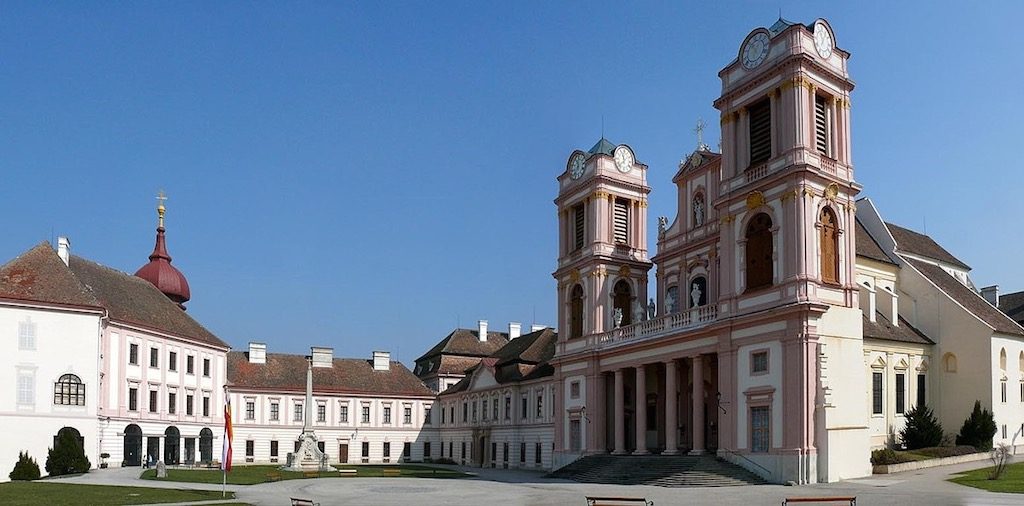
Goettweig Abbey.
An apricot figures deliciously in the Gottweig Abbey café’s demonstration of how to make a traditional Austrian marillenknodel. This apricot dumpling is a heavenly concoction comprising an apricot stuffed with a sugar cube, wrapped in dough, boiled, rolled in bread crumbs browned in butter, vanilla sugar, and cinnamon, and served with honey butter sauce. Thank heavens for my morning egg white omelet!

The majestic fresco.
Rebuilt following fires in 1580 and again in 1718, the abbey complex includes a stunning Baroque church and the handsome Imperial Staircase topped by a fresco depicting the Holy Roman Emperor Charles VI as Apollo, as if his other titles weren’t enough: King of Bohemia, as Charles II; King of Hungary and Croatia, Serbia; and Archduke of Austria. Although the wing was built in 1739, anticipating imperial visits, Charles apparently never came to the abbey before his death in 1740.
His daughter, Maria Theresa, would succeed him, the only female sovereign to control Hapsburg lands. Although she visited Gottweig Abbey, she reportedly had too large an entourage to utilize the wing built for that purpose. Historical note: The youngest of her 16 children, Maria—known as Marie Antoinette—would fatefully marry Louis XIV of France. Witness the complexity and dangers inherent in 18th-century politics!

Krems city gate.
We finished the morning exploring the town of Krems, with its 15th-century Steiner Gate, restored for the town’s 700th birthday celebration in 2005. Krems has a charming mix of shops and cafes. There were no Starbucks outlets, but there was a different American surprise: a pizza restaurant with a dubious Chicago connection!
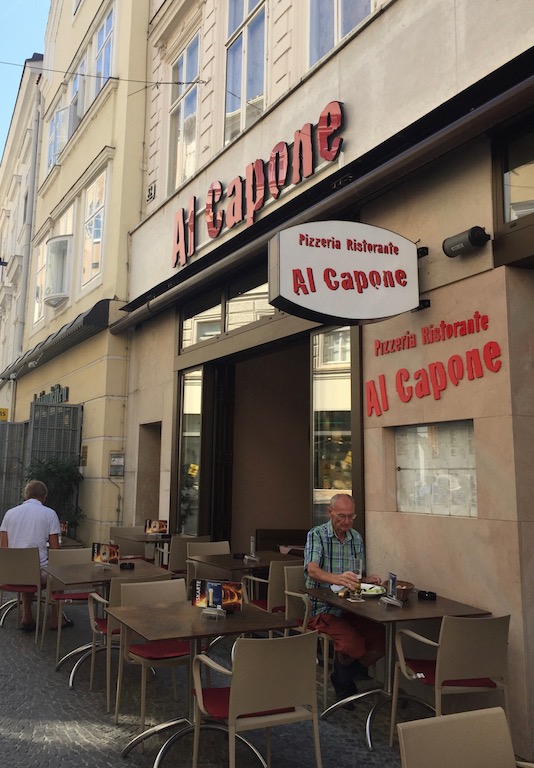
Al Capone.
Not far from Krems, in 2014 the international art collective Gelitin had erected a huge concrete nose, representing a giant buried in the earth, designed to be a tourist draw. It certainly enlivened our afternoon cruise!
Gliding through the picturesque Wachau Valley (a UNESCO World Heritage Site like many of our destinations), we watched the passing landscape of vineyards, country churches, and the occasional castle ruins, including one where Richard the Lionhearted had been held prisoner. Despite the drought, the hillsides were lush and green with endless parallel rows of grape vines running down to the market towns. A bicycle path following the river provided another optional afternoon’s activity for passengers.
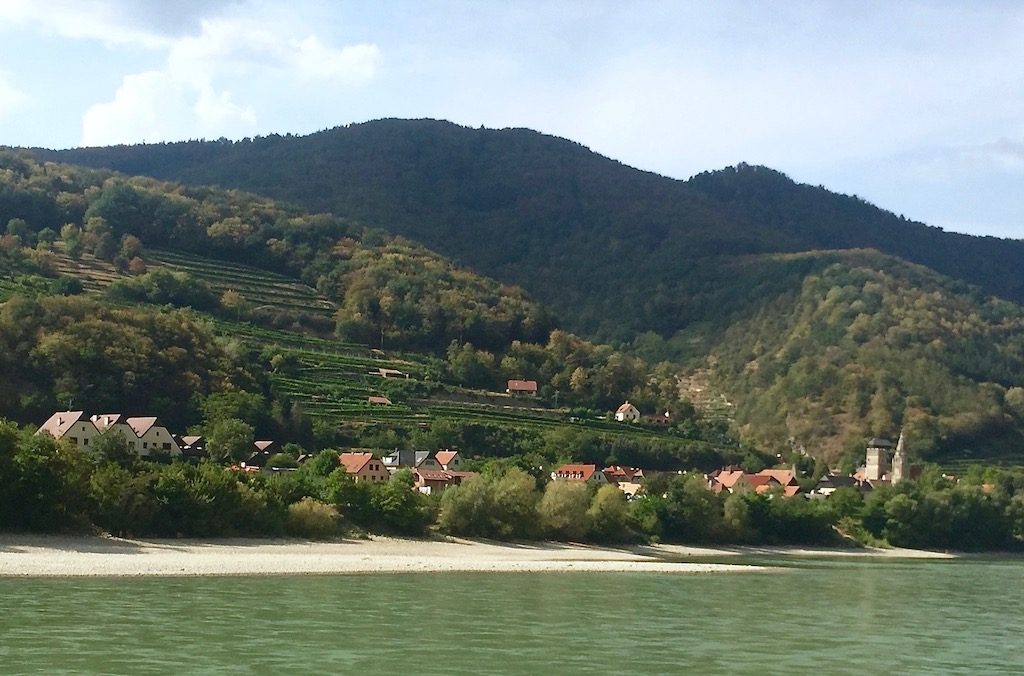
Wachau Valley vineyards.
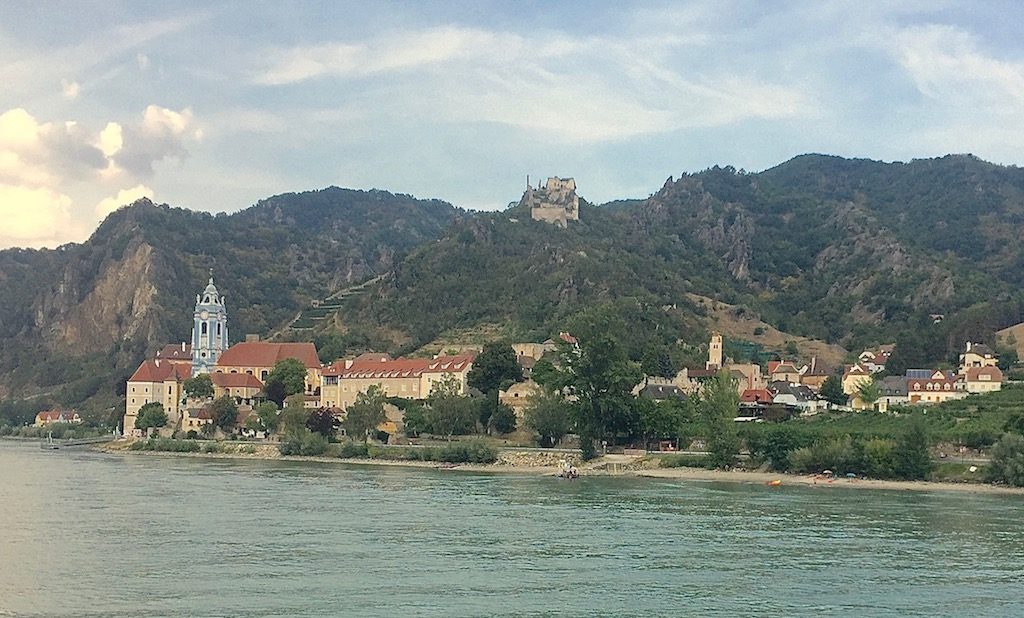
Durnstein and its mountain top castle, where Richard the Lionhearted was imprisoned.
Having docked that evening in Linz, Austria, a number of us opted the next morning to visit Cesky Krumlov, a historic Bohemian city founded in the 13th century by the Lords of Krumlov. Passing unimpeded across the Czech Republic border, our guide noted it had never been that easy before the fall of the Iron Curtain.
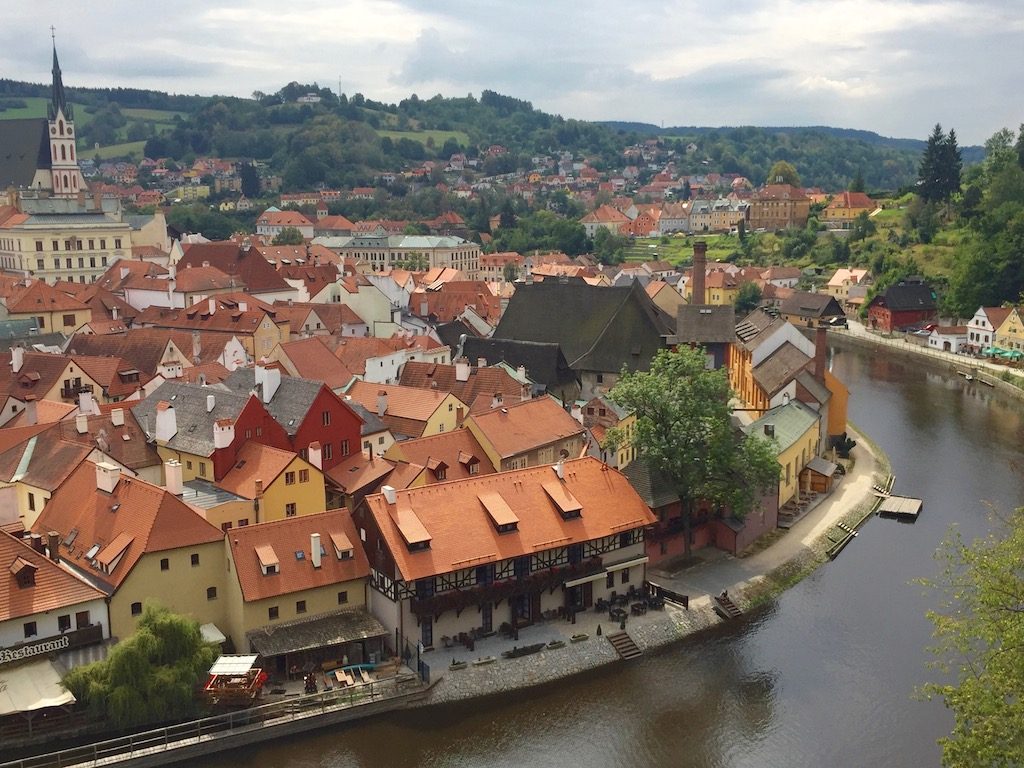
View of Cesky Krumlov from the castle
The castle (another UNESCO World Heritage Site) was handed down through several noble families, expanding to some 40 Renaissance and Baroque buildings, including a famous bear moat. Today owned by the Czech Republic, the castle hosts conferences and supports artists and scholars.
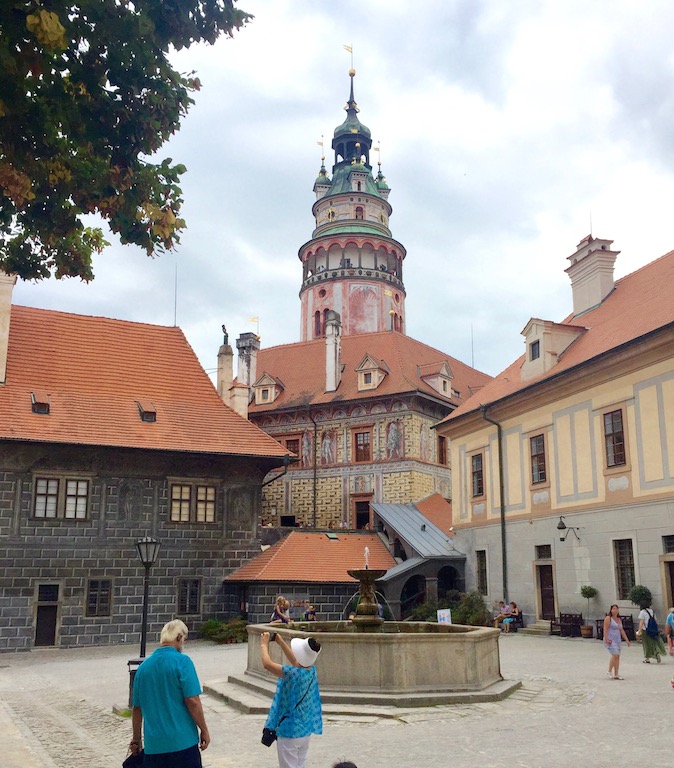
One of several plazas at the Cesky Krumlov castle.
In addition to shops and restaurants, the adjacent town contains a former brewery turned into a museum dedicated to Egon Schiele. The artist returned to his mother’s hometown briefly in 1910 to paint but was expelled with his young girlfriend a year later for his “Bohemian” lifestyle.

Egon Schiele Art Centrum.
One might not guess that the largest pipe organ outside the United States is found in a small German city that was once a medieval center of the salt trade and during the Renaissance, was famed for its knives and swords. Passau, flood-prone at the junction of the Danube, Inn, and Ilz rivers, was our final port on the Danube. Despite its claims to fame, Passau has a modest population of 50,000 but boasts many handsome Baroque buildings including St. Stephen’s ornate cathedral where its famed organ lives. We were fortunate to hear a lunchtime concert played on its over 17,000 pipes and 233 registers. Bach has never sounded so grand!
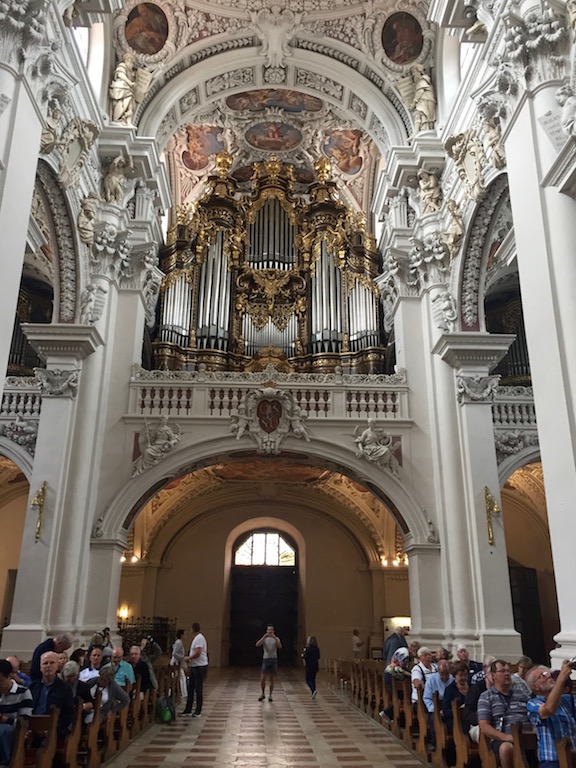
Passau pipe organ.
Along the Passau riverfront, a sculpture of a young woman caught my eye. Much to my amazement, she turned out to a popular local writer and Bavarian folk poet named Emerenz Meier who immigrated to Chicago with her family in 1906 and died here in 1928.
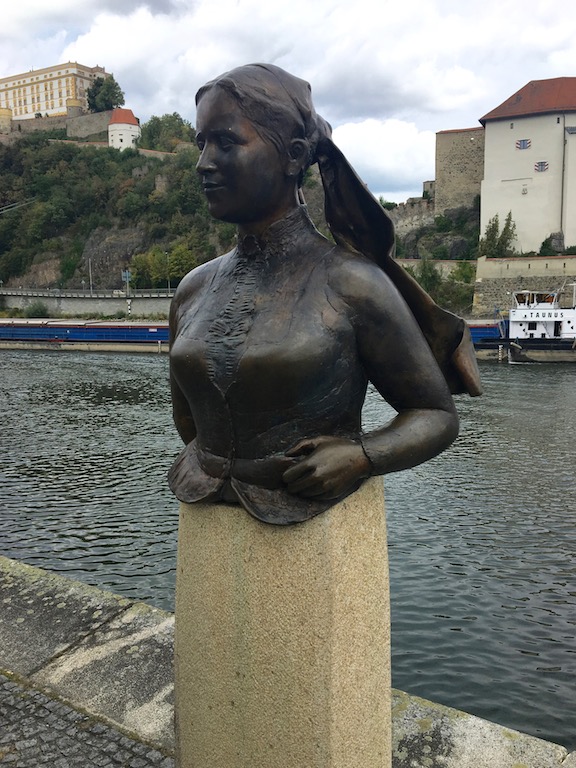
Emerenz Meier.
Viking again showed its logistical skills in organizing our departure. The evening before we left the ship, our Daily Viking flyer included an 11-column grid laying out a schedule for 190 of us from 2:45 to 9:00 am detailing when we would need to have our color-coordinated tagged luggage outside our stateroom doors, linked to our individual departure times and destinations. It worked like clockwork.
Our travels continued in Prague in the Czech Republic and in Meissen, Germany, where my husband would research his 18th-century German ancestry (an article for another day). Though compromised by the drought (Viking offered a generous discount on a future cruise), the Danube leg had been delightful.
While updating my understanding of central European geography and history, we reveled in absorbing centuries of art and architecture historically shared throughout Europe by the beautiful “blue Danube.” And by the way, the Danube is actually not blue. It’s a muddy greenish-brown, thanks to a layer of sediment and the current that continues to churn it up. But brown, green, or blue, the Danube offers a wonderful journey through European history and culture.







